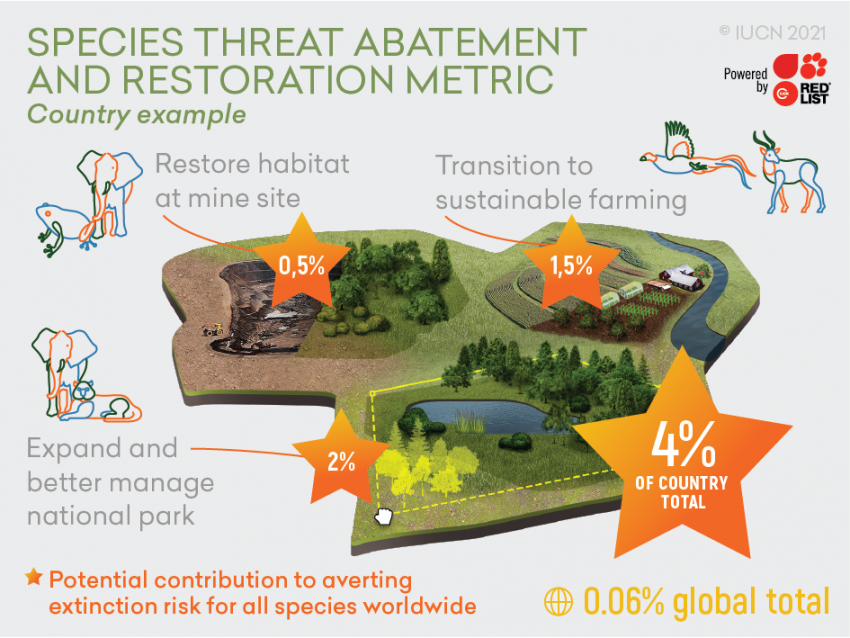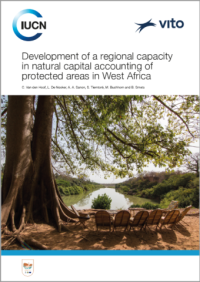What can be done?
The Species Threat Abatement and Restoration (STAR) metric allows business, governments and civil society to quantify their potential contributions to stemming global species loss, and can be used to calculate national, regional, sector-based, or institution-specific targets. The STAR metric was developed in 2021 in a collaboration between 55 organisations, and is based on the IUCN Red List of Threatened SpeciesTM. The Red List is the most comprehensive global assessment of the status of biodiversity.
Because biodiversity is distributed unequally around the world, STAR assesses the potential of specific actions at specific locations to contribute to international conservation targets. STAR estimates the contribution of two kinds of action to reduce species extinction risk – threat abatement and habitat restoration.
This makes it possible to compare specific threat abatement and habitat restoration actions in different places toward reducing global species extinction risk. This will help companies, countries, and others plan their conservation efforts. It also permits actors to add up their total contributions.
Currently STAR uses extinction risk and threat information on a range of terrestrial and marine species. This will soon be augmented by freshwater species as well as plants. In due course, the STAR methodology will be extended to apply to genetic diversity and to ecosystems, the latter likely drawing from the IUCN Red List of Ecosystems Categories and Criteria.
Setting science-based targets
STAR scores for a particular location (which can be of any size, e.g. a site, landscape, or country) show the potential contribution of conservation or restoration actions in that location to reducing the extinction risk for all species globally.
Target 4 of the Global Biodiversity Framework relates to reducing species extinction risk. STAR provides a means quantify this target in terms of STAR units, and to measure individual contributions to this target. Target 3 relates to safeguarding sites of particular importance to biodiversity through protected areas or other area-based conservation measures. Key Biodiversity Areas (KBAs) correspond to such sites, and so far, cover 8.8% of land surface but capture 47% of the global STAR threat-abatement score for vertebrate species.
The STAR metric can be used by individual institutions. For instance, a mining company can use STAR to measure the impact of restoring habitat for threatened species across a network of mines.






